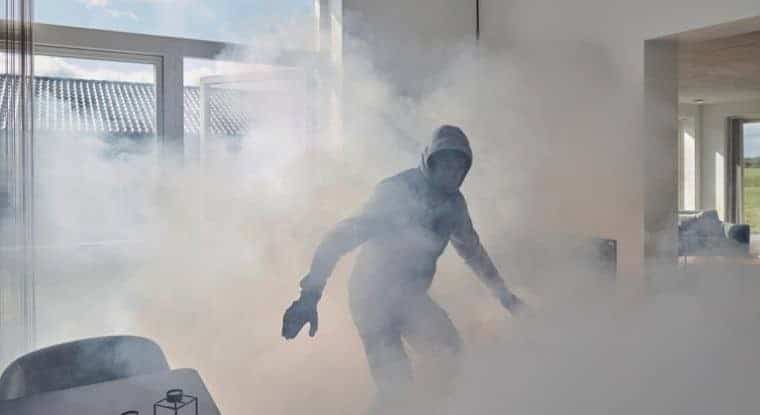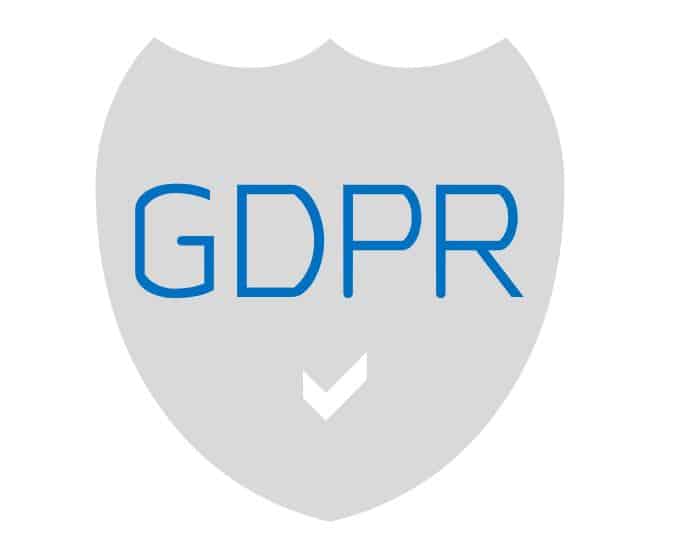
Fog cannons are commonly used in security systems for burglary protection. They are designed to create a dense fog that can disorient intruders and prevent them from seeing anything in the room. This makes it difficult for them to steal items or escape, and can provide valuable time for law enforcement to arrive.
Fog cannons generate a white fog as a means of burglary protection. But originally fog cannons were known as “rapid deploy security smoke machines.”
Sellers marketed them as “security smoke systems” intended to increase former security protocols. Burglars overpowered security systems and were often using violent methods to gain access to valuable items.
Typical anti-burglary systems had a response delay. And often, thieves could easily hide their identity from poor-quality cameras with limited viewing capabilities. The smoke security market opened up supplementing these failing security measures. The goal was not to prevent entry, but to stop any loss when a thief infiltrated a room.
Developers deployed the first smoke security cannons in 1974 to protect gold stores held in highly targeted vaults. And by 1993, full commercial smoke security systems were in use.
Fog cannons are popular security devices that release a dense, white fog to disorient intruders and prevent theft. The fog is created from a fluid solution that is heated up and discharged through a nozzle, creating a white, dense cloud. But what exactly is this fog fluid, and is it harmful to humans and animals?
The answer is no, the fog fluid used in fog cannons is safe to inhale by both humans and animals. The fog fluid typically consists of two main ingredients: water and glycol. These ingredients are non-toxic and non-flammable, making them safe for use in indoor environments. However, it’s still recommended to ventilate the area after the fog has cleared.
Not only is the fog harmless to your body, it’s water-based and dry, so it won’t leave a residue on clothing or furniture. Moreover, it is even safe for electronics. Laboratories and official governing bodies have tested and approved the security fog, confirming it to be safe and harmless.
In many parts of the world, security fog is known as ‘smoke cloaks’, ‘smoke security systems’, or a combination ‘smoke fogging security system’. The words fog and smoke are often used interchangeably, but the distinction between ‘fog’ and ‘smoke’ is significant.
Devices using smoke (pyroelectric) patrons create instant real smog, while fluid-based devices are continuously generating fog. Smoke, in any form, is harmful to the body, so it’s important for fog to be disassociated from it. Moreover, it’s crucial to understand that smoke is dangerous, posing significant health risks. Exposure to smoke can lead to serious health problems, including respiratory issues, cardiovascular diseases, and even cancer. Smoke must not be used inside if there are people in the same room. Formaldehyde is 10 times higher than recommended by WHO. There are also many other substances in the smoke, and it is not enough to ventilate the room for 30 minutes, as it is with fog.
As you can see, the term ‘smoke’ had a long-standing, common use background. But there are important differences between the composition of smoke and fog.
Fog is created by heating a mixture of glycol and water until it turns into a dense cloud, which is then ejected from a fog cannon. The process creates a dry fog that is harmless for electronics and safe to inhale, and it won’t leave residue on clothing or furniture. Security fog is both dense and durable.
In contrast, smoke is created by burning or combustion of a substance, which produces particles. Those models use smoke patrons to create instant real smoke. It requires a new smoke patron after each usage and it can create visible dust in the area.
Overall, understanding the difference between fog and smoke is important when choosing a security system for your home or business. By opting for a fluid-based fog cannon, you can enjoy the benefits of dense fog protection without any of the harmful side effects associated with smoke.
The Xtra+ fog fluid solution has been rigorously tested in laboratories at the Institute of Technology in Denmark and other world-class labs abroad, being proved to be harmless and safe to inhale. ( documentation )
Many fog cannons have fluid systems that are a pain to reload. PROTECT’s fog fluid containers have a smart-click system that prevents spillage and allows for a quick, easy refill. Additionally, end-users can easily change the fog fluid on the Xtratus ® and Qumulus ® fog cannons.

When you visit any web site, it may store or retrieve information on your browser, mostly in the form of cookies. Control your personal Cookie Services here.